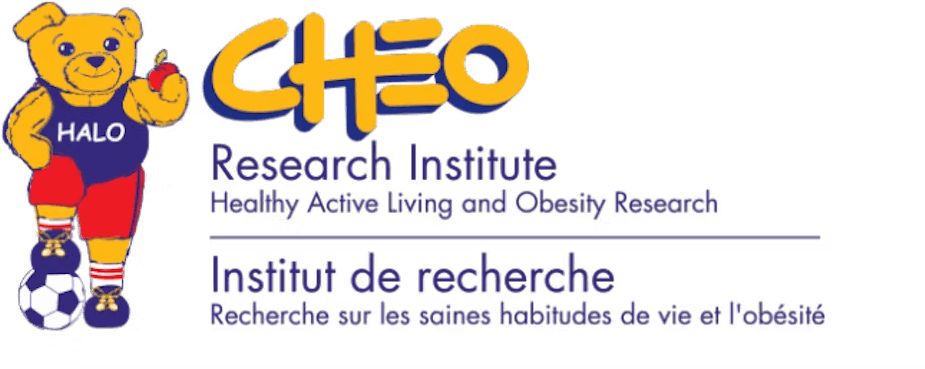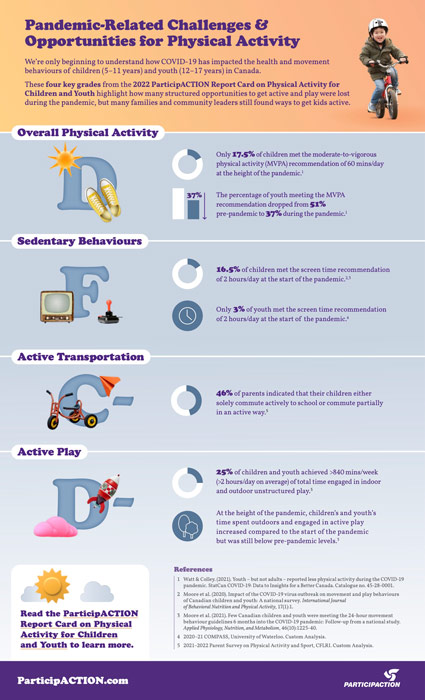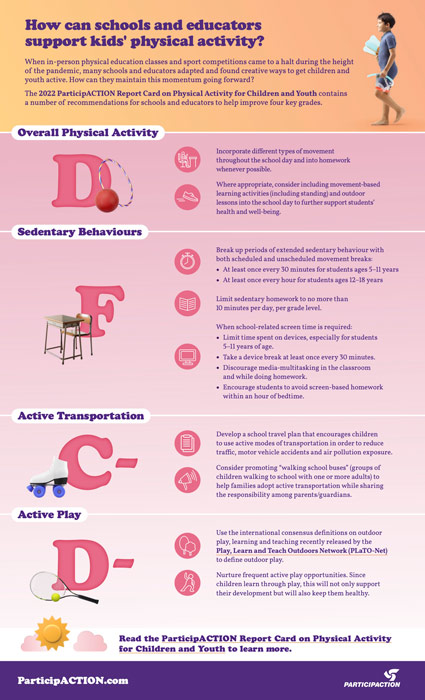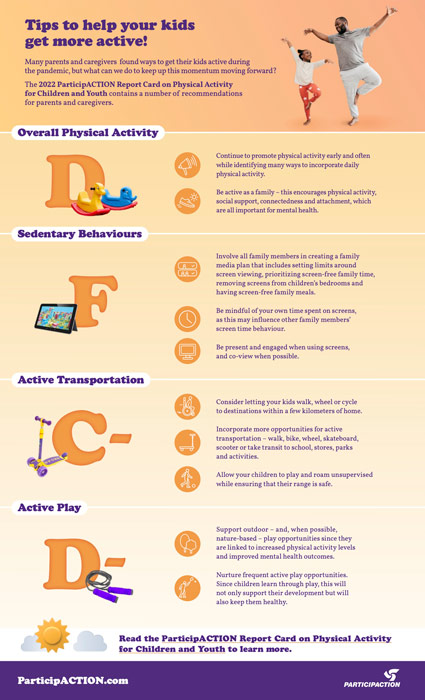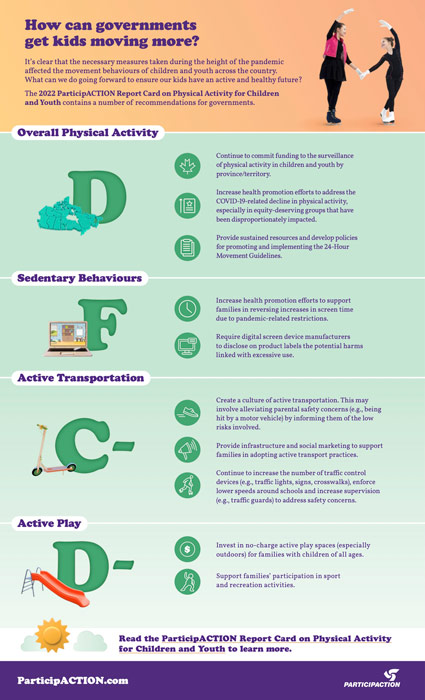2022 Children & Youth Report Card
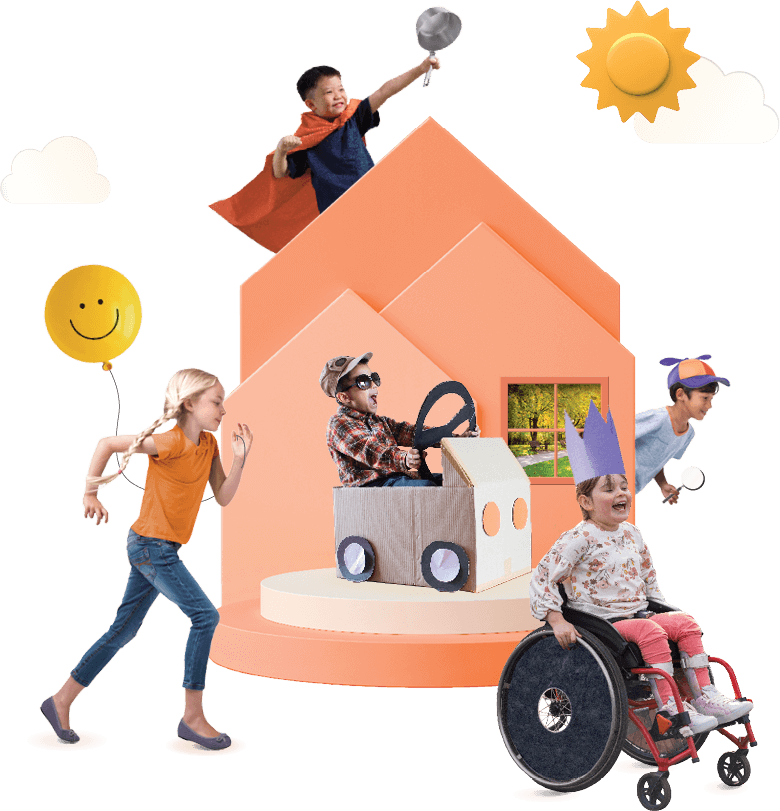
How has the pandemic impacted kids’ physical activity levels?


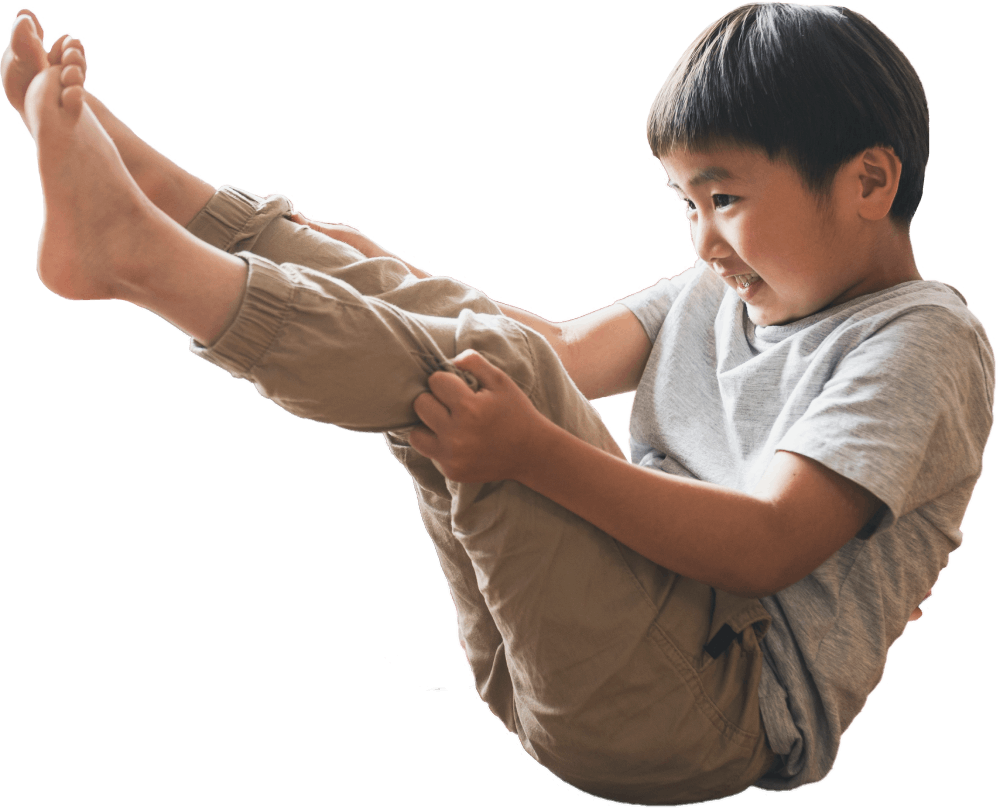
Overall Physical Activity
Only 28% of kids in Canada (5-17 years) are meeting national physical activity guidelines
- This is a drop of 11% from the previous Report Card.
- Indigenous and newcomer youth had even larger decreases, going from 67% and 56% pre-pandemic, respectively, to 38% and 35% during the pandemic.
- This is a decrease from the last Report Card (D+).
Recommendations
- Continue to promote physical activity early and often while identifying many ways to incorporate purposeful and incidental daily physical activity.
- Increase health promotion efforts to address the COVID-19-related decline in physical activity, especially in equity-deserving groups that have been disproportionately impacted.
- Funding from various levels of government should continue to be committed for the surveillance of physical activity in children and youth by province/territory.
Sedentary Behaviours

16.5% of children met the screen time guideline of 2 hours/day at the start of the pandemic
- 3% of youth met the screen time recommendation at the start of the pandemic.
- This is a decrease from the last Report Card (D+).
Recommendations
- Set daily screen limits for children and avoid creating passive screen use opportunities, instead using screens to connect with others.
- Encourage educators to apply recent International School-Related Sedentary Behaviour Recommendations. These suggest limiting classroom screen use and including frequent breaks in sedentary behaviour throughout the school day.
- Health promotion efforts are needed to support families in reversing increases in screen time due to pandemic-related restrictions.
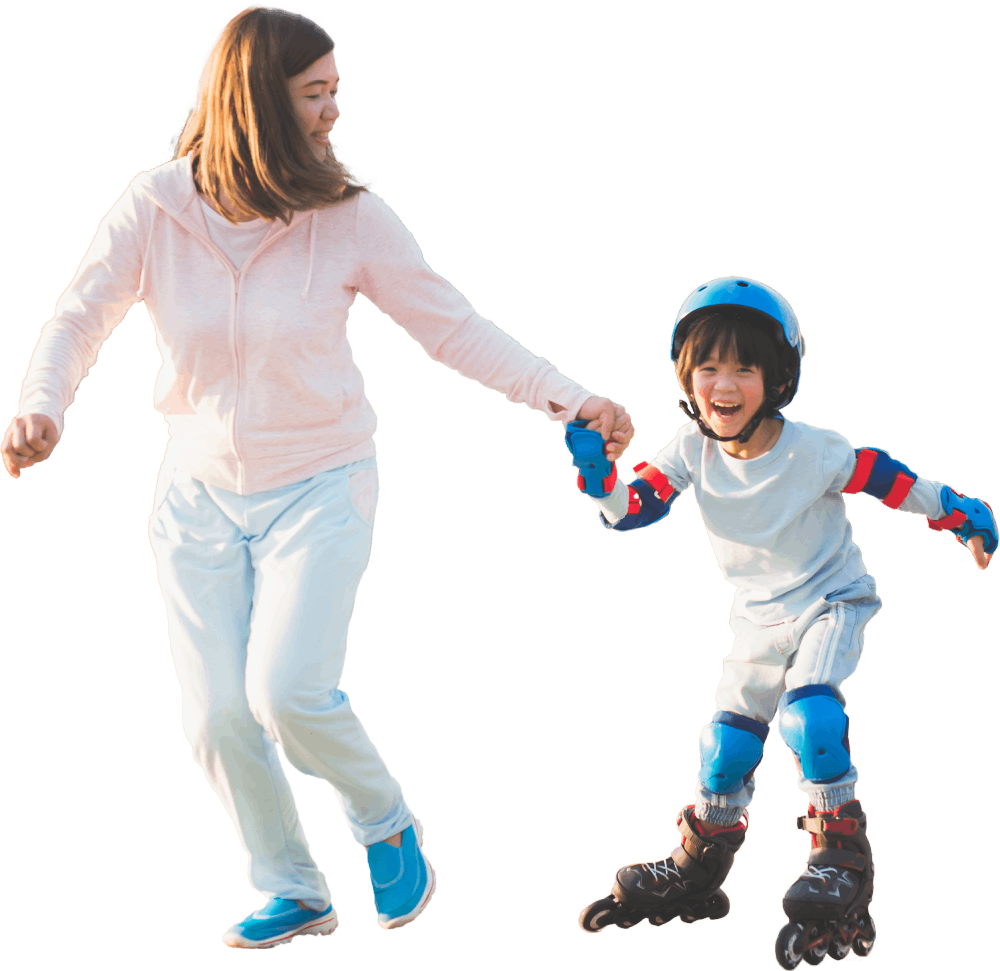
Active Transportation
46% of parents indicate that their children either solely commute actively to school or commute partially in an active way
- Several cities across Canada expanded street space available for active transportation and physical distancing during the COVID-19 pandemic; however, these expansions tended to occur in areas with fewer children.
- This is an improvement from the last Report Card (D-).
Recommendations
- Consider letting kids walk, wheel or cycle to destinations within a few kilometres of home.
- Schools should develop a school travel plan encouraging children to use active modes of transportation in order to reduce traffic, motor vehicle accidents and air pollution exposure.
- National-level surveillance is needed on how often children and youth engage in active travel to and from destinations other than school, and what those destinations are.
Active Play
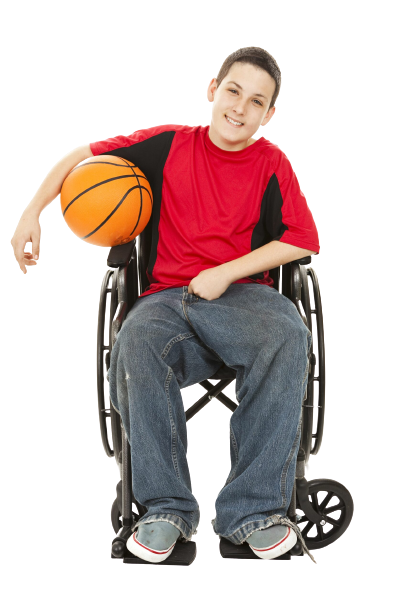
25% of children and youth achieved more than 840 mins/week (>2 hours/day on average) of total time engaged in indoor and outdoor unstructured play
- At the height of the pandemic, children’s and youth’s time spent outdoors and engaged in outdoor play increased compared to the start of the pandemic but was still below pre-pandemic levels.
- This is an increase from the last Report Card (F).
Recommendations
- Promote and support outdoor — and, when possible, nature-based — play opportunities since they are linked to increased physical activity levels and improved mental health outcomes.
- Encourage frequent active play opportunities. Given that children learn through play, this will not only support children’s development, but will also keep them healthy.
- Use the international consensus definitions on outdoor play, learning and teaching recently released by the Play, Learn and Teach Outdoors Network (PLaTO-Net) to define outdoor play.
Tools & resources
Report card
Recommendations for governments
Key findings
Press release
Communications toolkit
Recommendations for schools & educators
Recommendations for parents & caregivers
Strategic & content partner
